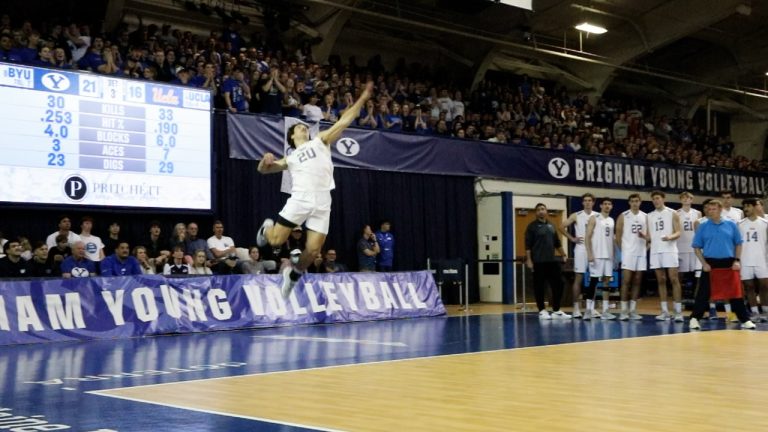Is a volleyball topspin jump serve better than a float serve?
In a 2022 study of women’s volleyball servers, we found that approximately 95% of women’s college volleyball players utilize a jump float serve in competition, as opposed to another serve type such as a topspin jump serve.
A simple eye test shows that topspin jump serves are much more common in boy’s and men’s volleyball than they are in girl’s in women’s volleyball, but that eye test won’t show us which serve type is better. To answer the question, we dove into the stats of more than a hundred NCAA men’s volleyball players throughout the MPSF and Big West Conferences in 2023.
These two types of serves are very different. Topspin serves by NCAA men’s volleyball players can reach speeds as high as 75 miles per hour, while float serves at this level of men’s volleyball rarely reach 40 miles per hour. Interestingly, women’s college volleyball players and girl’s high school volleyball players average higher float serve speeds, because the lower net height allows for higher velocity.
| MPSF & BIG WEST MEN'S VOLLEYBALL SERVERS, 2023 (Primary Servers from All 13 Teams) | |||||||||||
|---|---|---|---|---|---|---|---|---|---|---|---|
| Jump Serve Type | # of Servers | % of Total Servers | Total Serves | Server Rating (3pt) | Server Rating (4pt) | Ace % | Error % | Ace: Error Ratio | Opponent Good Pass % | Knockout % | Point Score % |
| Float | 28 | 26.2% | 6,259 | 0.61 | 1.34 | 2.8% | 10.8% | .26 | 61.7% | 34.1% | 34.4% |
| Topspin | 79 | 73.8% | 21,807 | 1.01 | 1.84 | 6.9% | 20.9% | .33 | 44.2% | 44.1% | 36.3% |
Looking at the chart above helps answer many important questions about the two serve types. Not surprisingly, topspin jump servers outnumber float servers in the highest levels of men’s volleyball. But still, the number of float servers is not insignificant.
Also not surprisingly, the topspin jump servers outperformed float servers in every single statistic except for missed serve percentage. Similarly, women’s NCAA topspin jump servers performed better in many of these statistical categories.
Ultimately, and probably most importantly, these male topspin jump servers also point scored at a slightly higher percentage than the float servers. Conversely, the female topspin jump servers point scored at a slightly lower percentage than float servers. These point scoring discrepancies are most likely a result of the fact that male topspin jump serves have more velocity than female topspin jump serves.
how fast do topspin jump serves need to be?
Unlike float serves, the most important factor in a topspin jump serve’s effectiveness is speed. Whereas a float serve’s effectiveness can be judged by spin (or lack of), location, and velocity — many college coaches don’t even give serving location calls to jump servers.
To become a legitimate serving option, topspin jump serves should be at least 50 miles per hour in boy’s varsity volleyball or higher. Any serves slower than this benchmark of 50 mph resemble something closer to roll shot or down ball.
